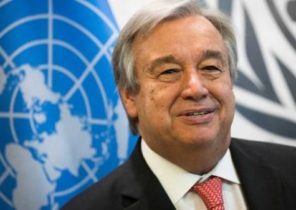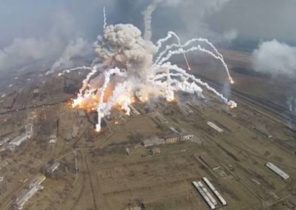NEW YORK — IN February, I warned that a number of predictable crises — the so-called “white swans” — are able to provoke in this year of tremendous global turmoil. I wrote that:
“… between the United States and Iran has occurred a military confrontation, which soon may escalate; China has covered the outbreak with the potential to become world pandemic; fighting cyberwaste; the largest holder of U.S. Treasury bonds has chosen a strategy of diversification of assets; the presidential primaries of the Democratic party has exposed divisions in the ranks of the opposition to Trump and questioned the procedures of counting of votes; the rivalry between the United States and four revisionist powers are enhanced; expenses for the real world caused by climate change and other environmental trends are growing rapidly”.
Since flash covid-19 in China really developed into a pandemic, proving the correctness of those of us who pre-warned that the coronavirus can very negatively affect the world economy. Thanks to massive stimulus measures, “the great recession” 2020 is not turned into a “greater depression”. However, the global economy remains fragile. And even if there is a V-shaped recovery after the collapse to very low indicators of output and demand, it may last only one or two quarters given the low level of economic activity.
Alternative: amid so much uncertainty, and the tendency to avoid risks and to reduce the size of debt that can demonstrate corporations, households and even countries, over time, may become more anemic U-shaped recovery of the economy. However, if the recent surge in the number of cases of infection covid-19 in the United States and other countries will not be stopped, and in autumn and winter will start the second wave (and before will be opened safe and effective vaccine), then the economy is likely to wait for a W-shaped recession with the two recessions. In addition, given the presence of such profound weaknesses in the global economy, it cannot be excluded that in the middle of the decade will come L-shaped “greater depression”.
As I predicted in February, the rivalry between the United States and four of the revisionist powers like China, Russia, Iran and North Korea — has intensified on the eve of the November presidential elections in America. There is a growing concern that these countries use cyberweapons to intervene in the elections and deepening political divisions in America. If the outcome of the election will be a small gap between the candidates, this almost certainly would lead to charges (of any party) to “fraud”, and potentially to civil unrest.
In addition, the crisis covid-19 seriously exacerbated the Sino-American cold war that touches on the issues of trade, technology, information, investment and currency. In Hong Kong, Taiwan, East and South China seas have escalated to a dangerous geopolitical tensions. Even if we assume that neither China nor the US wants military confrontation, active balancing on the brink of war could lead to military incidents that could spiral out of control. Made by me in February warning that the Sino-American cold war could turn into hot, has since become even more urgent.
I was expecting that in the middle East Iran would exacerbate tensions with the US and its allies, especially Israel and Saudi Arabia. But on the background of the increasingly obvious weakness of the ratings trump the Iranians have obviously chosen a policy of relative restraint, hoping that the victory of Joe Biden will lead to the opposite United States accession to the nuclear deal in 2015 and the easing of us sanctions. Meanwhile, Israel, realizing that his strategic window closes, according to allegations in the press, began to carry out secret attacks on various military and nuclear targets in Iran (allegedly with the tacit support of the administration trump). As a result, were often heard talking about the “October surprise” associated with the Middle East.
I also expressed concern that the administration may trump the use of sanctions for the arrest and freezing bought by China, Russia and other countries-opponents of US Treasury bonds, triggering them on sale on the background of the transition of these countries in the geopolitically safer assets such as gold. These concerns (as well as the threat of inflation due to the large, Montesilvano budget deficit) since then has caused the sharp rise in the gold price this year has risen by 23%, and from the end of 2018 — more than 50%. The US is really turning into a weapon of the dollar, which has recently weakened, as both rivals and allies of America are trying to diversify, getting rid of assets denominated in dollars.
Environmental concerns also increase. In East Africa, the desertification process has created ideal conditions for the biblical plague of locusts, which destroy crops and livelihoods. According to the findings of a new study in the coming decades crop failures caused by increasing temperature and desertification, forced to move hundreds of millions of people from the hot tropical zones in the direction of the United States, Europe and other regions with a temperate climate. There are also new studies that warn that the transition climatic “point of no return” such as the melting of major ice sheets in Antarctica and Greenland may cause sudden, catastrophic sea level rise.
It is also becoming increasingly clear link between climate change and pandemics. People actively invade the habitats of wild animals, so they increasingly come into contact with bats and other carriers of zoonotic diseases. In addition, there are growing concerns that due to the melting of Siberian permafrost can appear deadly virus that has long been frozen; they are able to spread rapidly around the world, like covid-19.
Why financial markets blissfully ignored all these risks? After the fall of 30-40% in the beginning of the pandemic, many stock markets have managed since then to win back almost all their losses. This is due to large-scale budget support and hope for an early emergence of vaccine covid-19. Observed in the markets of a V-shaped recovery suggests that investors expect the same V-shaped recovery of the economy.
The problem is that today remains true to all what was true in February: the economy may still quickly go downhill due to the materialization of another economic, financial, geopolitical or medical unlikely threats (so-called tail risk). Many of these threats remain, and in some cases they have become even more relevant due to the current crisis. Markets are usually not very well take into account the political and geopolitical tail risks (not to mention environmental) because their probability is difficult to assess. However, given the events of the last few months, we should not be surprised, if you have one or even several white swans, which again shake the international economy, and this year not even have time to finish.
Nouriel Roubini is an American economist, Professor of Economics at new York University. One of the most respected experts in the world on global Finance. Predicted the global financial crisis (2008-2011).







